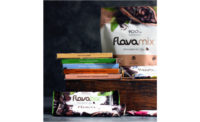Although Kermit the Frog first sang about the difficulties of “Being Green” back in 1970, it hasn’t gotten any easier nearly 50 years later. And while Kermit’s lament dealt with learning how to appreciate one’s uniqueness amidst conformity, the term green has also picked up environmental connotations.
The most recent rush of hurricanes tearing through the United States and Mexico has amplified the discussions about climate change. Two months ago (Sept. 14), Mars Inc. launched its Fans of Wind energy campaign, using M&M’S characters “Red” and “Yellow” as enthusiastic advocates for renewable wind-powered energy.
The campaign is part of Mars’ Sustainable in a Generation Plan, which includes $1 billion of investment over the next few years to tackle urgent threats including climate change, poverty in the supply chain and scarcity of resources. This effort holds special meaning for M&M’S, since Mars sources wind power equivalent to the energy needed to produce all the M&M'S sold in the world.
Berta de Pablos-Barbier, president of Mars Wrigley Confectionery U.S., provides more details on the campaign and Mars’ Sustainable in a Generation Plan initiative as well as other topics.
CI: Is this the first time that Mars is using its iconic M&M’S characters for a public service campaign? Regardless, what prompted the decision to engage “Red” and “Yellow” in the Fans of Wind energy campaign?
BP-B: It is the first time we’re using our characters as the voice for a cause! We’ve tapped our Red and Yellow spokescandies to speak up about environmental issues and show consumers that they play an important role in the fight against climate change.
By lending our brand voice, we’re hoping to raise awareness about the importance of renewable energy. M&M’S are fun and bright, and in a way, Red and Yellow are our own celebrities. So, it makes sense to tap into their influence to share this message.
One M&M’S candy on its own can seem small, but thanks to the love consumers have for the brand, we’re hoping to make a bigger impact. Each of our consumers has the power to take small steps to increase their use of renewable energy. Together, we can all make big strides in ensuring the future health of our planet.
CI: What kind of goals do you have for the Fans of Wind energy campaign? What’s been the initial reaction?
BP-B: At Mars, we support the scientific consensus on climate change. Mars is at the forefront of renewable energy, and we are committed to increasing consumers’ awareness of the importance of everyone — companies and brands included — doing their part in combating climate change. The Fans of Wind energy campaign is intended to spark a dialogue among consumers about the importance of doing our part to address climate change.
CI: Are there any plans to introduce any more wind farms in the United States or elsewhere? And are wind farms more efficient than solar panels?
BP-B: In 2016, 36 percent of Mars’ total electricity demand came from renewable sources, and 89 percent of that was from wind.
Mars currently partners with two wind farms — one in Texas and one in the U.K. We’ve got another project in the pipeline in Mexico.
Mars needs a safe, reliable and widely available source of electricity to power our operations around the world. And, as a business, we need an affordable energy source that allows us to continue to grow and invest in our company. Wind energy delivers these benefits at scale: it is affordable, inexhaustible, available in many regions worldwide and allows us to continue to grow and invest in our company.
CI: How confident are you in meeting the 2040 goal of eliminating greenhouse gas emissions from direct operations?
BP-B: As a company, we’re continuing to seek opportunities to increase our renewable energy usage to meet our goal of eliminating our greenhouse gas emissions from our operations by 2040.
Mars Global just launched the Sustainable in a Generation plan, committing to reduce GHG emissions across our value chain by 27 percent by 2025 and 67 percent by 2050 in order to do our part to keep the planet from warming beyond two degrees. Our company is putting the full force of each of our businesses to meet these commitments.
As it stands, the consequences of climate change are a real threat — changing rainfall patterns, floods, droughts and the spread of pests and diseases put whole habitats and communities at risk. But we have the power to act now to prevent further climate change. As a family-owned business, Mars believes in taking a long-term view and preserving our planet for generations to come.
CI: Besides climate change, Mars’ Sustainable in a Generation plan addresses poverty in the supply chain and scarcity of resources.
BP-B: Yes, the Sustainable in a Generation plan includes commitments to a “Healthy Planet,” “Thriving People” and “Nourishing Wellbeing.”
Our goal for the commitment to a “healthy planet” is to reduce our environmental impacts in line with what science says is necessary to keep the planet healthy. This includes reducing GHG emissions as mentioned earlier to help keep the planet from warming beyond two degrees, cutting unsustainable water use by half by 2025 across our value chains, fully eliminating water use that exceeds sustainable levels in our value chains by 2050 and holding flat the total land area associated with our value chain.
Our goal for the commitment to “thriving people” is to meaningfully improve the working lives of one million people in our value chain to enable them to thrive. This includes working with others to help ensure everyone within our extended supply chains earns a sufficient income to maintain a decent standard of living, working to ensure everyone touched by our business to be treated with fairness, dignity and respect, and unlocking opportunities for women in our workplaces, marketplaces and supply chains.
Our goal for “nourishing wellbeing” is to advance science, innovation and marketing in ways that help billions of people and their pets lead healthier, happier lives. This looks different for each of our segments.
For Mars, Inc., this means advancing science and collaboration that will improve food safety and security and, therefore, health around the world.
For Mars Food, our passion is to bring the world to the dinner table. We’re encouraging families and friends to cook healthy meals together, and doing our part to use more vegetables, fruits and whole grains, while reducing sodium and added sugar.
For Mars Wrigley Confectionery, this means making, marketing, portioning and labeling all of our products in ways that help consumers limit intake of sugar and trans fats, while still delivering a delicious treat.
And finally, for Mars Petcare, this means creating a better world for pets and the people who love them through nutritious pet food, high quality veterinary services, and research on the benefits of human/animal interaction and access.
CI: How is Mars progressing on its commitment to using nothing but certified cocoa beans by 2020?
BP-B: In 2016, more than 50 percent of the cocoa we use came from certified sources. Using certified cocoa helps improve the livelihoods of farmers and helps to protect the environment. This indicates that we are tracking well against our commitment to using 100 percent of cocoa from certified sources.
CI: I understand that in returning to Mars after working in fashion for several years, you’ve returned to your “first professional love,” that is the food industry. What ideas gleaned from the fashion industry to do you see applying toward confections?
BP-B: Working within the fashion industry most recently was an amazing learning and growth experience, especially in the area of bringing pleasure to people’s lives. When I considered the sort of pleasure that our chocolate products bring to consumers, it excited me about this role and the opportunity to expand how we talk to and engage with our loyal fans.
During my career, I’ve seen consumers shift from purchasing products simply because they taste good, or are affordable and convenient, to now demanding connections to and from the brand.
Today’s consumers are asking questions when making purchasing decisions, such as: Does the brand try to connect with me? Can I communicate with the brand? Does it treat me and others well? Is it contributing to society?
Brands can continue to grow, build purpose and connect with fans. When thinking about how to make the power of people work brands, the best place to start is often just listening to what consumers have to say. Creating an open dialogue with consumers about the issues that matter most to them, while keeping the brand’s history and context in mind, can spark some truly powerful ideas.
CI: Everyone talks about the premiumization trend in chocolate and other food segments. Do you see more opportunities for Mars’ Dove brand as a result?
BP-B: Premiumization is a trend we’re continuing to see in chocolate. While we continue to make our traditional favorites like M&M’S and SNICKERS, there are opportunities for our specialty brands such as Ethel M.
The Cocoa Exchange is a new, direct-to-consumer platform that provides a rewarding way to turn a passion for cocoa into a worthwhile profession. The Cocoa Exchange products are designed to be experienced, and brought directly to consumers through specially curated in-home experiences and that includes the Dove Signature line.
Cocoa has been a passion of the Mars family for more than 100 years. Launched in the family kitchen in Tacoma, Wash., today Mars, Inc. is the world’s largest chocolate company. This exceptional pedigree, combined with the contribution of three in-house culinary chefs, brings chocolate to life in unexpected formats that are 100 percent exclusive to The Cocoa Exchange.
Dove Fruit, one of our top innovations in 2015, was first a top-selling product via The Cocoa Exchange. Based on this success, we are excited to further leverage The Cocoa Exchange as a test-and-learn platform, enabling us to trial unique, premium concepts quickly and efficiently via our own distribution channel.
CI: Millennials, and their buying habits, appear to dominate marketing and sales discussions these days. And yet, Baby Boomers still have enormous buying power, both for personal consumption as well as gifting. Do you think this demographic should be targeted more?
BP-B: While Millennials have officially surpassed Baby Boomers as the largest demographic in the workforce, we see opportunity in both demographics. And while chocolate and confections have been enjoyed for generations, their place in society is only cemented by the foundations we are laying for the future.
CI: What’s your favorite Mars confectionery brand?
BP-B: That is difficult — it’s like asking to pick your favorite child! I love dark chocolate though, so I would probably have to say Dove.











